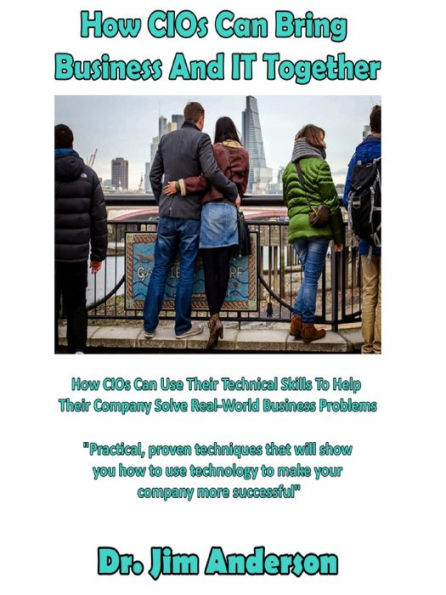As the world has become more and more digital, the importance of the role of a CIO within a firm has increased. No longer can CIOs be content to focus exclusively on technical topics. Instead, we now have to consider what the company's goals are and how technology can be used to help the company achieve those goals.
What You'll Find Inside:
* GETTING & KEEPING IT TOP MANAGEMENT’S ATTENTION
* WHAT CIOS NEED TO KNOW ABOUT PERFORMANCE MANAGEMENT
* 3 WAYS TO BRING BUSINESS AND IT TOGETHER
* IT VALUE: HOW TO MEASURE THE REVENUE OF IT
In order for both a CIO and an IT department to be successful, they are going to have to have the attention of the company's upper management. Getting that attention and then holding on to it is the job of the CIO. If you can get the attention that you need, then you'll have a much better chance of being able to secure the funding that your IT department is going to need in order to implement its programs.
Once you've been able to secure the funding that your department needs the hard work really begins. You are going to have to find ways to maximize the value that you'll be able to get out of the funding that has been allocated to you. One way to make this happen is to attempt to align what the IT department is doing with what the rest of the company is doing. Easy to say, hard to do.
One of the daily jobs of any IT department is to work with the rest of the company in order to better understand how they go about doing their jobs. This knowledge can then be used to identify new products that the IT department can create in order to simplify tasks that the company has to perform.
The tasks that an IT department performs at any given company are often quite similar. This means that the CIO would like to know what the industry best practices are. Traditionally, ITIL has been the standard definition of how to run an IT department. However, times are changing and now BDIM is starting to emerge on the scene.
At the end of the day, a CIO is going to be evaluated based on how well he or she is able to bring the business and IT together. In order to determine how well you've been able to do this, you are going to have to get comfortable with how to measure the revenue value of your company's IT department.
As the world has become more and more digital, the importance of the role of a CIO within a firm has increased. No longer can CIOs be content to focus exclusively on technical topics. Instead, we now have to consider what the company's goals are and how technology can be used to help the company achieve those goals.
What You'll Find Inside:
* GETTING & KEEPING IT TOP MANAGEMENT’S ATTENTION
* WHAT CIOS NEED TO KNOW ABOUT PERFORMANCE MANAGEMENT
* 3 WAYS TO BRING BUSINESS AND IT TOGETHER
* IT VALUE: HOW TO MEASURE THE REVENUE OF IT
In order for both a CIO and an IT department to be successful, they are going to have to have the attention of the company's upper management. Getting that attention and then holding on to it is the job of the CIO. If you can get the attention that you need, then you'll have a much better chance of being able to secure the funding that your IT department is going to need in order to implement its programs.
Once you've been able to secure the funding that your department needs the hard work really begins. You are going to have to find ways to maximize the value that you'll be able to get out of the funding that has been allocated to you. One way to make this happen is to attempt to align what the IT department is doing with what the rest of the company is doing. Easy to say, hard to do.
One of the daily jobs of any IT department is to work with the rest of the company in order to better understand how they go about doing their jobs. This knowledge can then be used to identify new products that the IT department can create in order to simplify tasks that the company has to perform.
The tasks that an IT department performs at any given company are often quite similar. This means that the CIO would like to know what the industry best practices are. Traditionally, ITIL has been the standard definition of how to run an IT department. However, times are changing and now BDIM is starting to emerge on the scene.
At the end of the day, a CIO is going to be evaluated based on how well he or she is able to bring the business and IT together. In order to determine how well you've been able to do this, you are going to have to get comfortable with how to measure the revenue value of your company's IT department.

How CIOs Can Bring Business And IT Together: How CIOs Can Use Their Technical Skills To Help Their Company Solve Real-World Business Problems

How CIOs Can Bring Business And IT Together: How CIOs Can Use Their Technical Skills To Help Their Company Solve Real-World Business Problems
Related collections and offers

Product Details
| BN ID: | 2940153995649 |
|---|---|
| Publisher: | Jim Anderson |
| Publication date: | 01/31/2017 |
| Sold by: | Smashwords |
| Format: | eBook |
| File size: | 2 MB |
